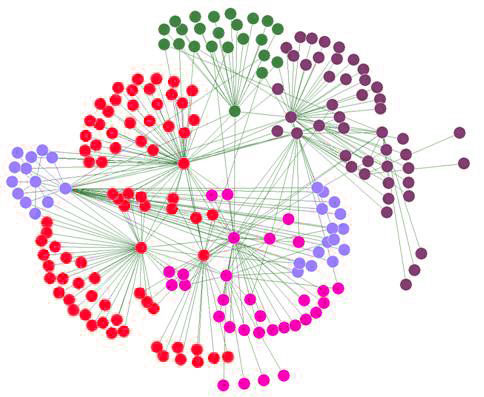Although much research has been conducted on the risk of financial markets since the bankruptcy of Lehman Brothers in 2008, most studies have adopted the information-cascade model, a simple model of information transmission through a network. However, a risk transmission model via more complicated structures is necessary because a real financial market has a multitude of overlapping transactions.
When a financial institution goes bankrupt, creditors with high-priority bonds (called senior bonds) can be fully repaid from the institution's remaining assets, while lower-priority creditors (those with junior bonds) cannot. In the traditional financial crisis model, it has been unclear how the difference in non-repayment risk due to debt priorities affects systemic risk.
Instead, Dr. Teruyoshi Kobayashi and his team from Kobe University used a multiplex network to express the differences in the priority of debt repayments. For example, they described the transaction relations of junior bonds in one layer of a network and those of senior bonds in the second layer. By generalizing the standard cascade model to an arbitrary number of layers, his team clarified the effect caused by the difference in non-repayment risk of debts of different priorities.
In addition, they derived a condition for which debt structures of the entire market will cause a financial crisis, and verified the accuracy of the condition by numerical simulations. Consequently, they confirmed that a necessary condition for minimizing systemic risk is that at least 50 percent of debts in the entire market should exist as senior debts.
Comment: Senior debtholders are, theoretically, more likely to be paid back in a crisis than junior debtholders:
[Senior debt is] borrowed money that a company must repay first if it goes out of business. Companies have a number of options for obtaining financing, including bank loans and the issuance of bonds and stocks. Each type of financing has a different priority level in being repaid if the company decides to liquidate. If the company goes under, the holders of each type of financing have different levels of rights to the company's assets.
The Basel Committee founded in the BIS (Bank for International Settlements) currently leads the global financial regulation, with each country establishing its own rules based on recommendations from the Committee. However, the existing financial restrictions do not take into consideration that systemic risk varies largely according to the priority of debts mutually held by various financial institutions.
Based on this research result, Kobayashi stresses that new regulations should be reexamined from the viewpoint of debt structures.
The article can be found at: Brummitt and Kobayashi et al. (2015) Cascades in Multiplex Financial Networks with Debts of Different Seniority.




They should look into why these businesses 'liquidate', as there is a big difference in crisis prediction in a market determined by forced 'liquidation', and perhaps in our current situation, the difference between real and fake earnings should be taken into this determination... ie. GAAP and non-GAAP.